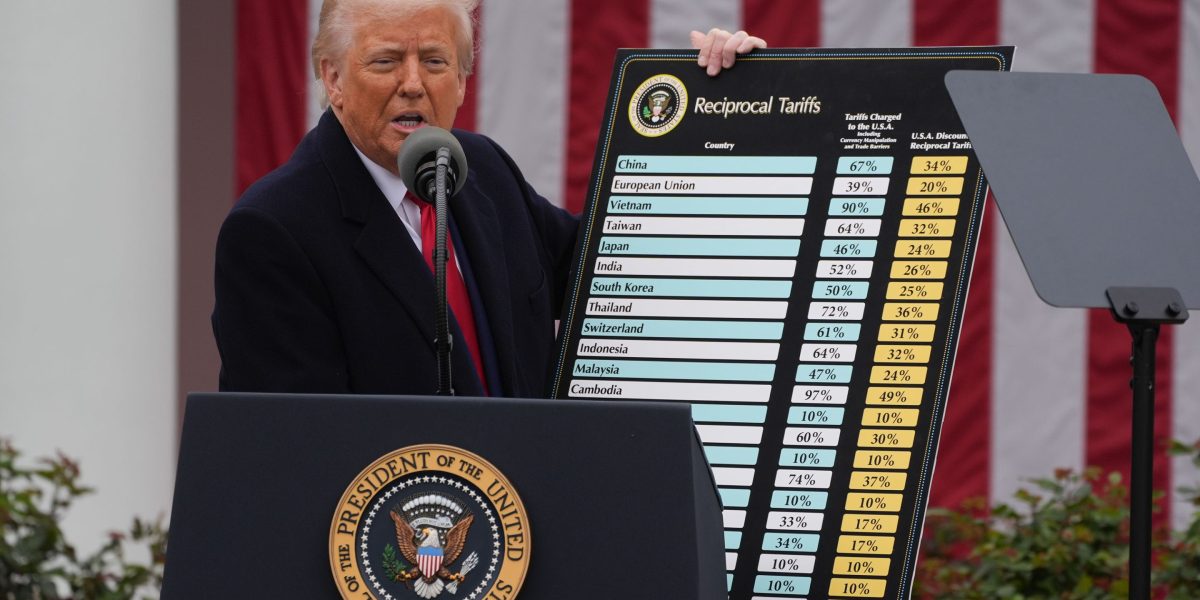Import taxes might lower inflation in the short run, but they do so at the cost of weaker economic performance and rising joblessness, according to a new analysis by researchers at the San Francisco Federal Reserve. The findings challenge traditional economic models, which suggest that tariffs typically push consumer prices upward by increasing import costs. Instead, the study indicates that higher tariffs act more like broad demand shocks, simultaneously reducing inflation and increasing unemployment.
Régis Barnichon and Aayush Singh, the authors of the working paper, argue that tariffs generate economic uncertainty, which dampens consumer and investor sentiment. This decline in confidence leads to reduced spending and investment, thereby slowing economic activity and exerting downward pressure on prices. Additionally, the imposition of tariffs may trigger declines in asset values, further suppressing demand across sectors.
The researchers found supporting evidence for both mechanisms: stock prices tend to fall and market volatility rises following tariff increases. Historical data from before World War II show that a permanent 4-percentage-point rise in tariff rates led to a 2-percentage-point drop in inflation and a roughly 1-percentage-point increase in unemployment. Post-war estimates, while less precise, still suggest a similar pattern.
The study arrives amid political shifts in U.S. trade policy. Former President Donald Trump recently removed tariffs on items such as beef and coffee after public frustration over living costs contributed to significant electoral setbacks for his party. Administration officials have consistently argued that these import duties are not driving inflation, despite a gradual rise in the consumer price index since the trade actions began in April.
Federal Reserve Chair Jerome Powell and other central bank leaders maintain that tariffs may cause a temporary spike in inflation, after which price growth is expected to continue moderating. While fears of a recession persist, the economy has shown resilience, with GDP recovering and consumer spending—particularly among high-income households—remaining strong. However, labor market expansion has weakened, with only 22,000 jobs added in September. Stricter immigration enforcement under Trump’s policies has also played a role in constraining hiring and firing activity.
Even if inflation begins to decline, voters may remain dissatisfied unless there is a clear improvement in overall affordability. Many consumers want to see actual price reductions, not merely slower increases.
— news from Fortune
— News Original —
Tariffs lower inflation by slamming employment and economic activity, Fed researchers say
The conclusion goes against the conventional wisdom on how import taxes affect prices and comes as President Donald Trump’s tariffs have stirred a growing backlash among Americans who are angry about higher food, utility and insurance costs.
But if the study’s finding are correct, Trump may eventually be able to point to better inflation numbers, assuming he can stomach a weaker economy and labor market.
In a working paper published on Thursday, San Francisco Fed researchers Régis Barnichon and Aayush Singh said higher tariffs lead to reduced economic activity, higher unemployment and lower inflation in the short term.
“The inflation response goes against the predictions of standard models, whereby CPI inflation should go up in response to higher tariffs,” they wrote. “Instead, tariff shocks appear to act as aggregate demand shocks—moving inflation and unemployment in the same directions.”
One possible explanation is that tariffs create uncertainty that hits consumers’ and investors’ confidence, depressing economic activity and putting downward pressure on inflation, according to the study.
Alternatively, tariffs could trigger a drop in asset prices that also weigh on demand, resulting in higher unemployment and lower inflation.
“We find evidence in support of both channels: in response to higher tariffs, stock prices decline and stock market volatility increases,” Barnichon and Singh wrote.
Before World War II, they found that a permanent 4-percentage-point increase in the tariff rate reduced inflation by 2 percentage points and raised unemployment by about 1 percentage point.
After the war, the estimates are more uncertain but still point to tariff hikes reducing inflation and worsening unemployment, they added.
Trump tariffs
Administration officials have long maintained that Trump’s tariffs aren’t stoking inflation, even though the consumer price index has crept higher since he launched his trade war in April.
But on Friday, Trump announced that he’s scrapping tariffs on beef, coffee, and a range of other commodities, after voter anger about worsening affordability delivered stunning losses to Republicans during off-year elections this month.
Meanwhile, Federal Reserve Chairman Jerome Powell and other policymakers believe tariffs will likely produce a one-time boost to inflation, which eventually will resume its cooling trajectory.
Despite fears of a recession, the economy has remained resilient amid Trump’s tariffs, though the recent government shutdown has put key indicators on hold.
After dipping early this year, GDP rebounded strongly and consumer spending keeps expanding, largely on the backs of the wealthiest Americans.
But employment has indeed slowed sharply with payrolls growing by just 22,000 in September. Trump’s immigration crackdown is also a factor in this low-hire, low-fire labor market.
Still, even if inflation does head back down, that may not be good enough for voters, who are demanding that overall affordability improve and want to see prices decline, not just rise at a slower pace.
